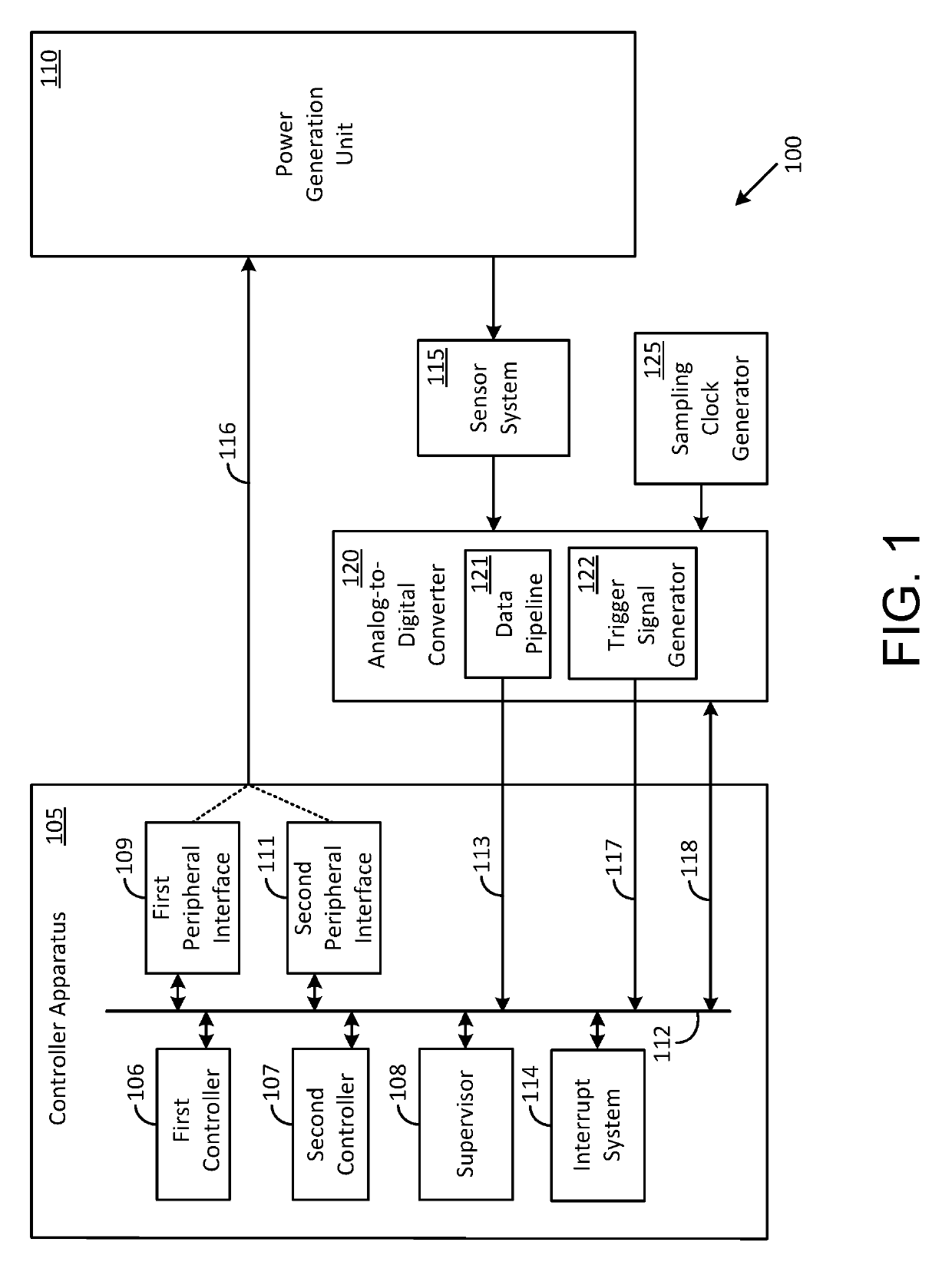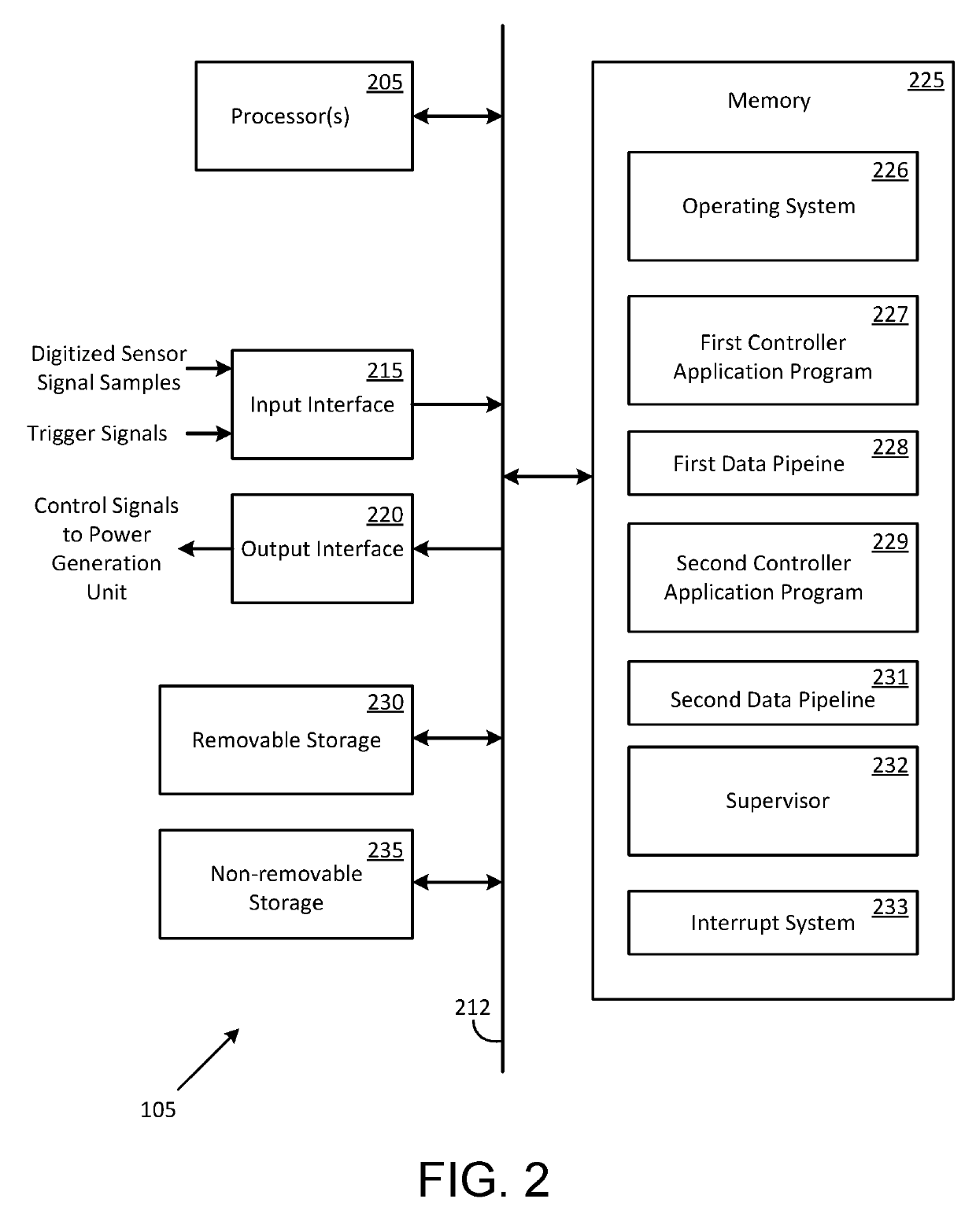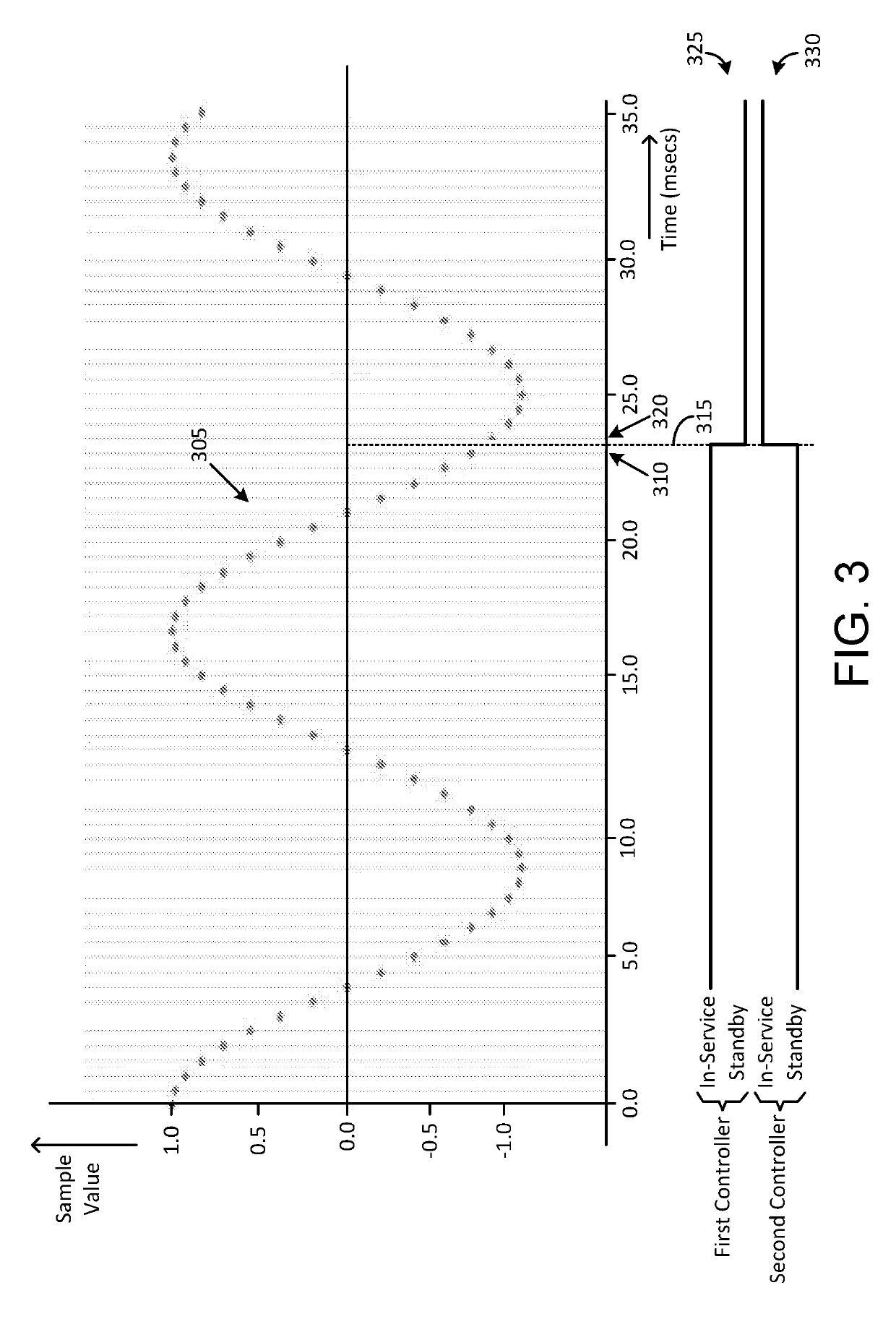Systems and methods for controlling a power generation unit
- Summary
- Abstract
- Description
- Claims
- Application Information
AI Technical Summary
Benefits of technology
Problems solved by technology
Method used
Image
Examples
Embodiment Construction
[0017]In terms of a general overview, certain embodiments described in this disclosure pertain to a system having a controller apparatus for controlling a physical asset such as a power generation unit. For purposes of description, the physical asset will be referred to herein as a power generation unit. It should however be understood that the systems and methods disclosed herein can be applied to a wide variety of physical assets and are not limited to a power generation unit. For example, a physical asset can be an electric power generation unit, an electrical transformer, an electric motor, or an electric power transmission line. One technical effect of certain embodiments of the disclosure is that switch-over of controllers can be carried out in a manner that minimizes or otherwise reduces any interruption in control operations. Further, another technical effect of certain embodiments of the disclosure is that modification or replacement of various application programs may be c...
PUM
 Login to View More
Login to View More Abstract
Description
Claims
Application Information
 Login to View More
Login to View More - R&D
- Intellectual Property
- Life Sciences
- Materials
- Tech Scout
- Unparalleled Data Quality
- Higher Quality Content
- 60% Fewer Hallucinations
Browse by: Latest US Patents, China's latest patents, Technical Efficacy Thesaurus, Application Domain, Technology Topic, Popular Technical Reports.
© 2025 PatSnap. All rights reserved.Legal|Privacy policy|Modern Slavery Act Transparency Statement|Sitemap|About US| Contact US: help@patsnap.com



